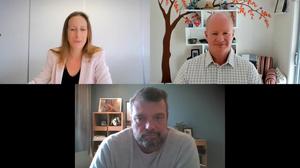A 270 per cent increase in revenue and ability to optimise more than 1 million discrete customer journeys are just a few ways data visualisation is helping Australian marketplace, Oneflare, lift its business game.
Oneflare is a marketplace bringing together buyers and sellers of services across 300 categories, from plumbers to celebrants and bookkeepers. In November, it had 76,000 jobs shared via the platform, and in building category alone, it’s done close to $500 million worth of work this year so far. Daily jobs posted per day on the platform average at 3000.
Oneflare head of insights, Marco Maizener, told CMO the organisation knew it was incredibly important to have a single source of truth for data. Historically however, the business was using numerous platforms and channels for analysis and reporting, making it difficult to forecast and report well and in a way that allowed teams to be proactive. A decision was made to adopt Tableau in 2019, a data visualisation and reporting tool that could show all different data sources in one source of truth.
“Although we have been around for a long time, very few people of heard of Oneflare,” CEO, Billy Tucker, explained. “We had decided we were not going to optimise for our brand, but instead collect every single transaction point to fully optimise every customer journey. Since our business was conceived, we have collected 5-6 billion transactions, all stored and accessible so we can identify discrete journeys we can optimise for.
“We could either win the consumer through brand awareness or by optimising existing customer journeys and be in the right place at the right time. We can only do that with a very sophisticated view of data and analytics.”
According to Tucker, Google already owns so much of the customer journey to source a supplier. “But it’s incumbent on us to be there when we are in that journey and find the right person for the work,” he continued. “That’s where having a single source of truth, compressing an enormous amount of data into one place, has been essential to our success.”
Oneflare collects 3 to 4 million data points on any single day across 130 categories, which it houses in a cloud-based warehouse. Using an ETL process, all data is fed directly into Tableau, from CRM to the call centre, sales support and more for analysis, reporting and action.
“It’s very important for our data and insights team to give product managers and stakeholders the freedom and ability to play and own metrics as much as possible,” Maizener commented. “Tableau allows them to dive into the data, without having to ask the insights team every five minutes for reports or insights directly.”
Early on, Tucker said the team learnt asking the right questions is vital to data-driven decision making. “What the insights team has done a good job of is teaching the rest of the business to fish,” he said.
“It’s not about hiding in a room for days but interrogating and ascertaining what insights you can glean to help find the right info. There’s also that tendency to build perfect reports that are never used. It’s incumbent our insights team avoids that pitfall, because again that can be a huge overhead. So most of the time teams can go in and use the dashboards themselves.”
One significant data use case for Tucker is optimising the hundreds of categories Oneflare brings buyers and sellers together for across thousands of geographies.
“We constantly run into liquidity blockers – for example, if someone comes to us looking for an outdoor painter in Wagga Wagga, we need to make sure we have at least four partners in that geo to service the work otherwise the platform has no liquidity,” he explained. “What’s difficult is we find ways to find that work on Google, but we only do that if we have the painters set up. It’s a constant game – there are about 1.2 million variations of these jobs and locations.
“We’re constantly balancing the worker Tableau services both our SEM and search, but also our sales team so they can be on the phone in advance to secure those partners to find more work. That’s the engine in our business which constantly balances the issue of liquidity. There’s nothing more important than that.”
A second commercial win from data visualisation is Oneflare’s sales tracker dashboard. This allows its sales team to see how well they are tracking throughout the month against monthly targets and each other. It’s depicted on a big screen as a horse race.
Maizener and Tucker attributed an 81 per cent improvement in sales volumes per salesperson to the tracker, leading to a 270 per cent revenue increase overall. In addition, data visualisation has saved the business 300 hours a year working out sales commissions.
Optimising customer journeys
Another area where data is leading the way is in optimising customer journeys. Tucker said Oneflare’s job forms have 12 questions, each of which spindles out into 1 million job form versions.
“There are certain questions that get answered in certain ways and when they are, they become incredibly appealing to the business,” he said. “It would be impossible to identify this en masse without the tech engine and visualisations. So we can identify those at scale and optimise accordingly.”
For example, a conveyancer in Melbourne might be interested in certain geos and not in others. “What Tableau does is allow us to home in quickly to those versions and areas and optimise, which is good for yield,” Tucker said. “There are thousands of examples where Tableau has helped us identify the appeal of an individual job.”
This kind of reporting also helps Oneflare identify what questions might have a significant drop-off rates, leading to dissatisfied customers.
“It’s helping us to see every step of the user journey – how many are starting, using the platform, allows us to identify any issues in any part of the journey. That’s always available and up to date and very useful,” Maizener said.
An example Maizener highlighted was across the thousands of fridge repair jobs posted to its site. His team noticed huge drop-off rates when it came to consumers detailing their fridge model. Having identified this drop-off point via data, Oneflare realised consumers had to pull their fridge out to be able to check the model number on the back.
“It wasn’t obvious to us that many more customers were trying to get their fridges repaired but didn’t know their model number and would drop off the journey,” Maizener said. “We removed the question as service providers didn’t need the model number for those 3500 jobs per month.”
“That was a genuine needle in the haystack,” Tucker added. “Unless you can pivot and visualise, it’s almost impossible to identify those sorts of experience hurdles.”
Today, Oneflare has 205 custom workbooks being used. Two major reports dominate data-driven discussion: ‘FBI’, which helps teams to investigate what’s going on and is combined with its internal Slack channels; and ‘Canary’, which again is about keeping track on business health.
“We have dashboards that go red if things aren’t going well and we can quickly identify that. Importantly, it helps us quickly identify the false negatives and prevents us from chasing after things that are just a blip,” Tucker added.
A recent dashboard creation during COVID-19 was used during lockdown to see which categories were more impacted than others.
“In one insight we were able to see these categories and take action in response to that,” Tucker said. “We were able to satisfy our shareholders and board pretty quickly with a weekly report to the board that illustrated for them how things had shifted. That ability to spin up a dashboard and set their minds at ease that it wasn’t going to be a disaster for us even as categories shifted, was incredibly useful.”
As a next step, Maizener flagged plans to improve its financial forecasting by using Tableau with Python to make more accurate predictions.
“Our goal now is to increase our financial data maturity and move from analytical reporting to predicting data. That’s the future,” he said.
Read more about how other brands are harnessing data visualisation:
Follow CMO on Twitter: @CMOAustralia, take part in the CMO conversation on LinkedIn: CMO ANZ, follow our regular updates via CMO Australia's Linkedin company page, or join us on Facebook: https://www.facebook.com/CMOAustralia.












